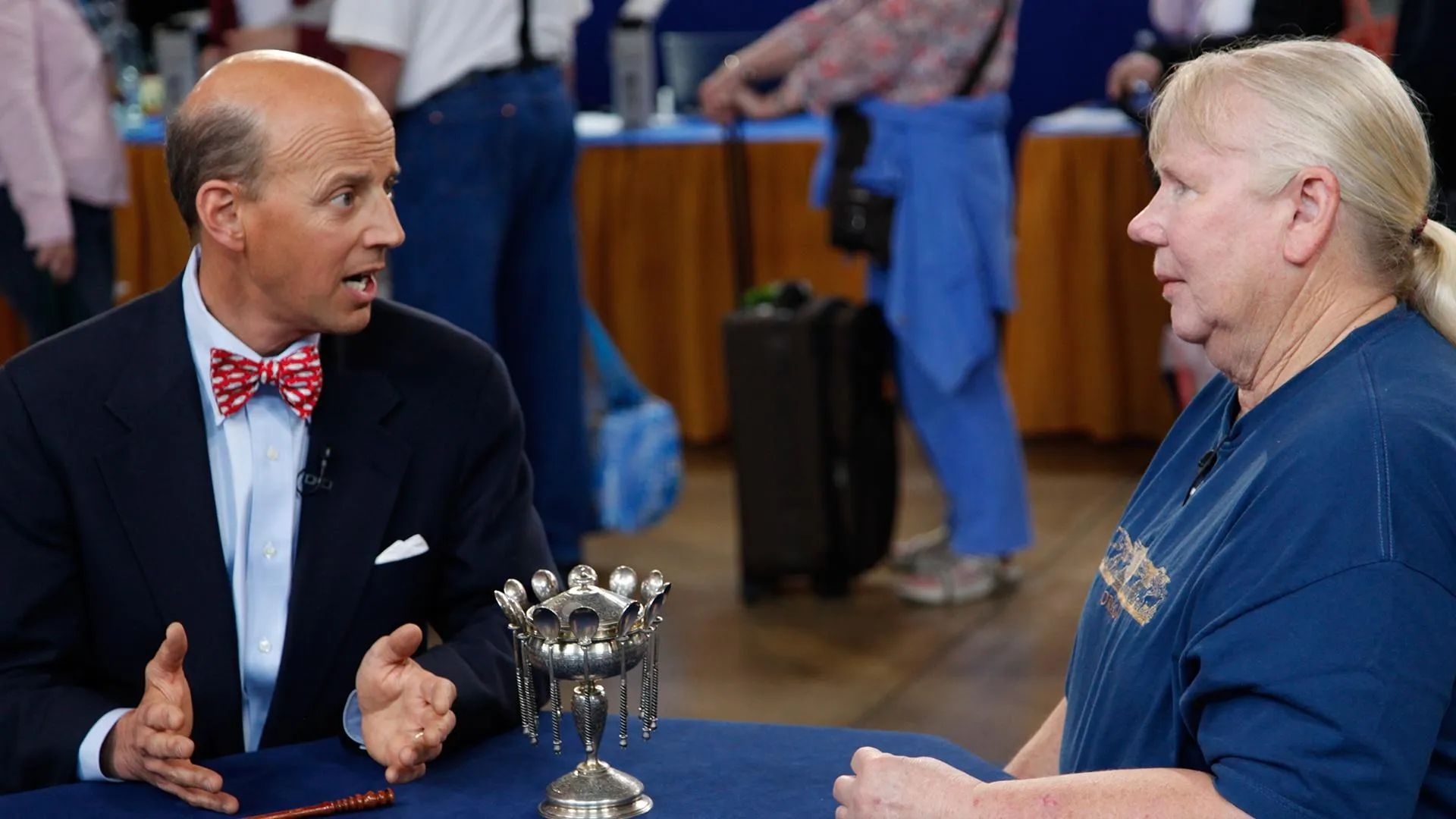GUEST: My grandmother's brother took his daughter on a world tour in about 1896 and ended up in Sitka, Alaska, where they purchased these items. I know that they're Northwest coast, carved Indian spoon and bowl. I don't know the tribe exactly, and I assume they were used for eating, or some other utilitarian...
APPRAISER: Right. These were all made by one tribe, which is the Haida. The details on the spoons are really interesting. The smaller one here, it's a bird with a long beak that actually continues underneath as well. The detail is really fine, and this is the horn of a mountain goat sheep. This one is in perfect condition. Now, the other one is a lot more elaborate. At the top, there is a man. He's wearing a little hat, which has the rings on the top, which is called a potlatch hat. And underneath there are a series of other animals. There's a bear and there's a raven, and at the bottom here, you see there's an inverted face of a man, there, and underneath is another beautiful carved face of a raven. These spoons were used for personal use, but usually of a ceremonial nature. This is also from a mountain goat sheep, and they would steam it and form it and, um, make it as beautiful as this is. Now, this has some condition problems. It's got some repairs on the back, and it's also got nibbles at the top here.
GUEST: So these were like a totem pole?
APPRAISER: These are the same symbols that you find on the totem pole. These animals that were either significant to the clan or important to their life. This is the piece that I think is really interesting. This is a grease bowl. This oil, as you can see, that's oozing out of it has been oozing out for over 100 years. It comes from the oil of a fish called the eulachon. And the eulachon is a very thin, long fish. It's also called a candlefish. It has so much oil. I think 15% of the body's composition is oil. This is made from alder wood, and it's got brass tacks around the outside, but what's so fabulous about it is the carving. Now, we're not sure. We thought that it might be a beaver, because this item here is very similar to how they would illustrate the beaver's tail on the boxes. We thought originally it was probably 1880s, which would have been around the time that it was collected, but this broad form line around the eyes is really indicative of slightly earlier work. We think middle of the 19th century-- 1850s, 1860s. And the cross hatching here is superb work. It's really, really wonderful indeed.
GUEST: Very fine.
APPRAISER: It's a fabulous bowl. How much did you pay for these?
GUEST: Well, at her family auction, I bought these items and a few other ones for $2,500 for the whole lot. I said, "Well, I want something from the estate. I really like these items."
APPRAISER: Right.
GUEST: So I just kept bidding. And at the time I was in graduate school, didn't have money, and so my dad had to fund me the money, and I could see him turning kind of white as the price kept going up, and finally we got them, and he was really happy because he...
APPRAISER: And no buyer's remorse the next day?
GUEST: None-- had never had buyer's remorse because we just enjoy the carving.
APPRAISER: The retail price for this spoon here, probably around about $1,500 to $2,000. This one, I think about $3,000. If the condition had been really perfect...
GUEST: Yeah?
APPRAISER: We're looking at about, um, probably $6,000 to $8,000, maybe $9,000.
GUEST: Wow.
APPRAISER: This is the beauty. The retail value of this, I'd be very, very safe at about $10,000 to $12,000.
GUEST: That's a very nice price.
APPRAISER: I think so too.
GUEST: That's very nice.



